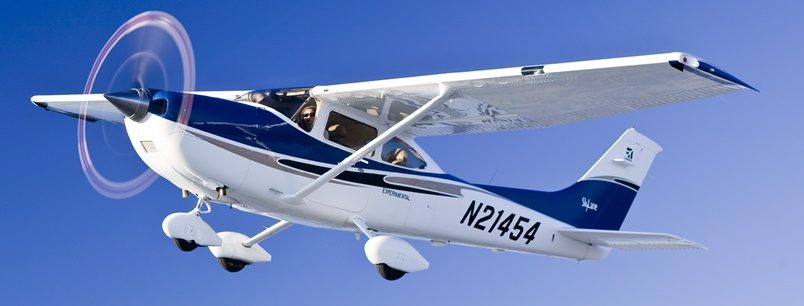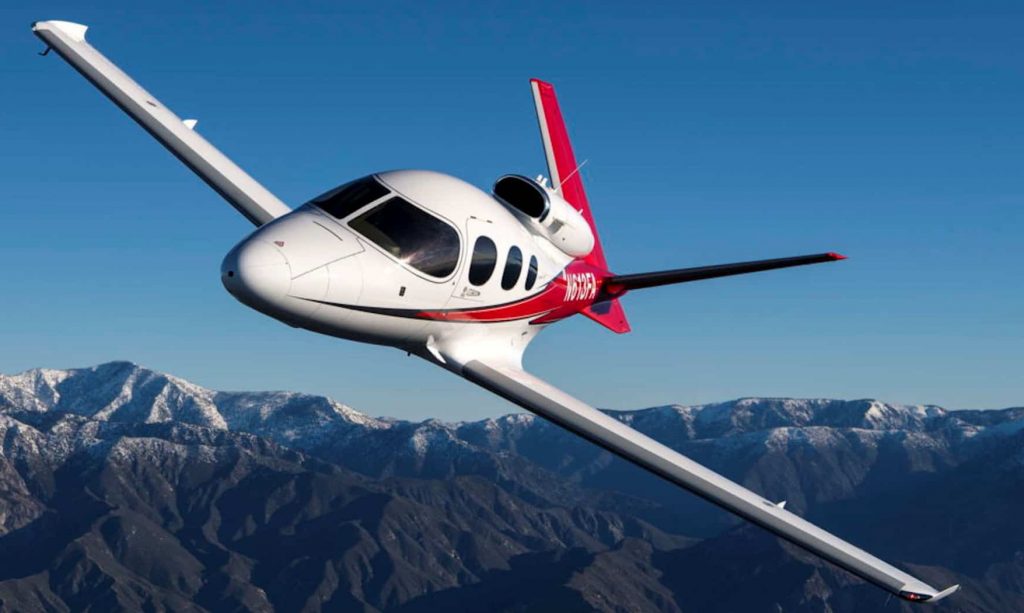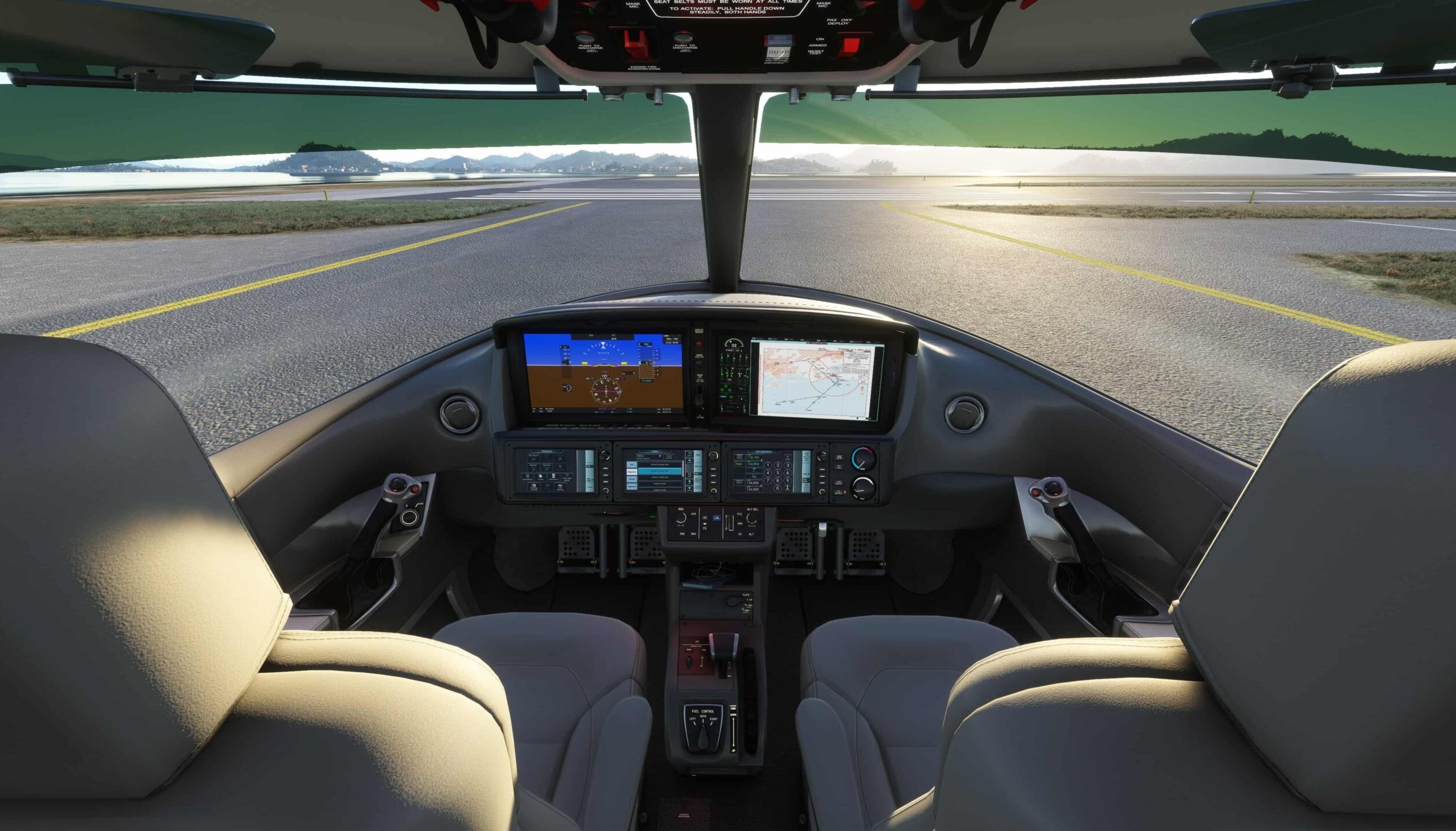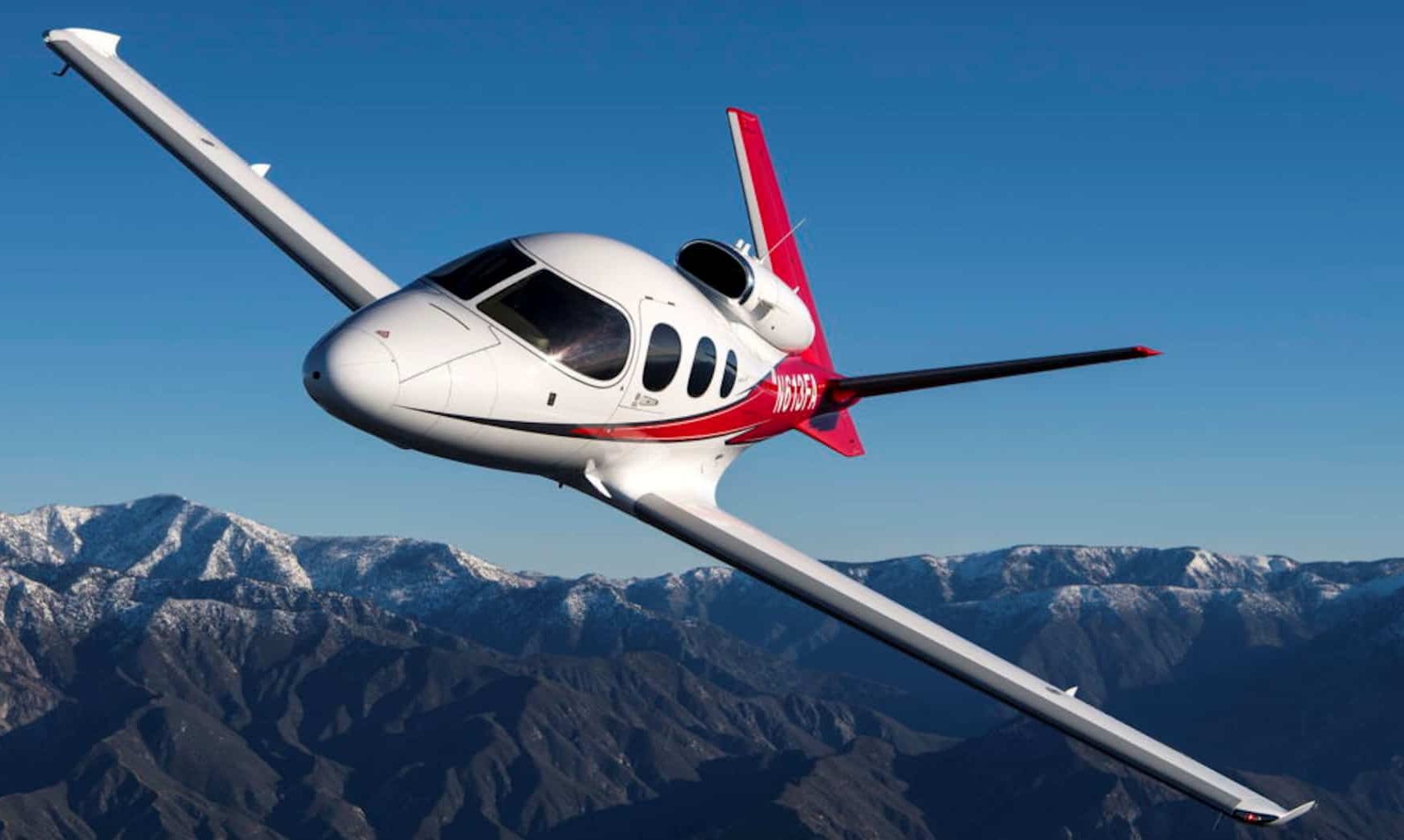Efficient Operation and Maintenance Practices for Your Cirrus Vision Jet
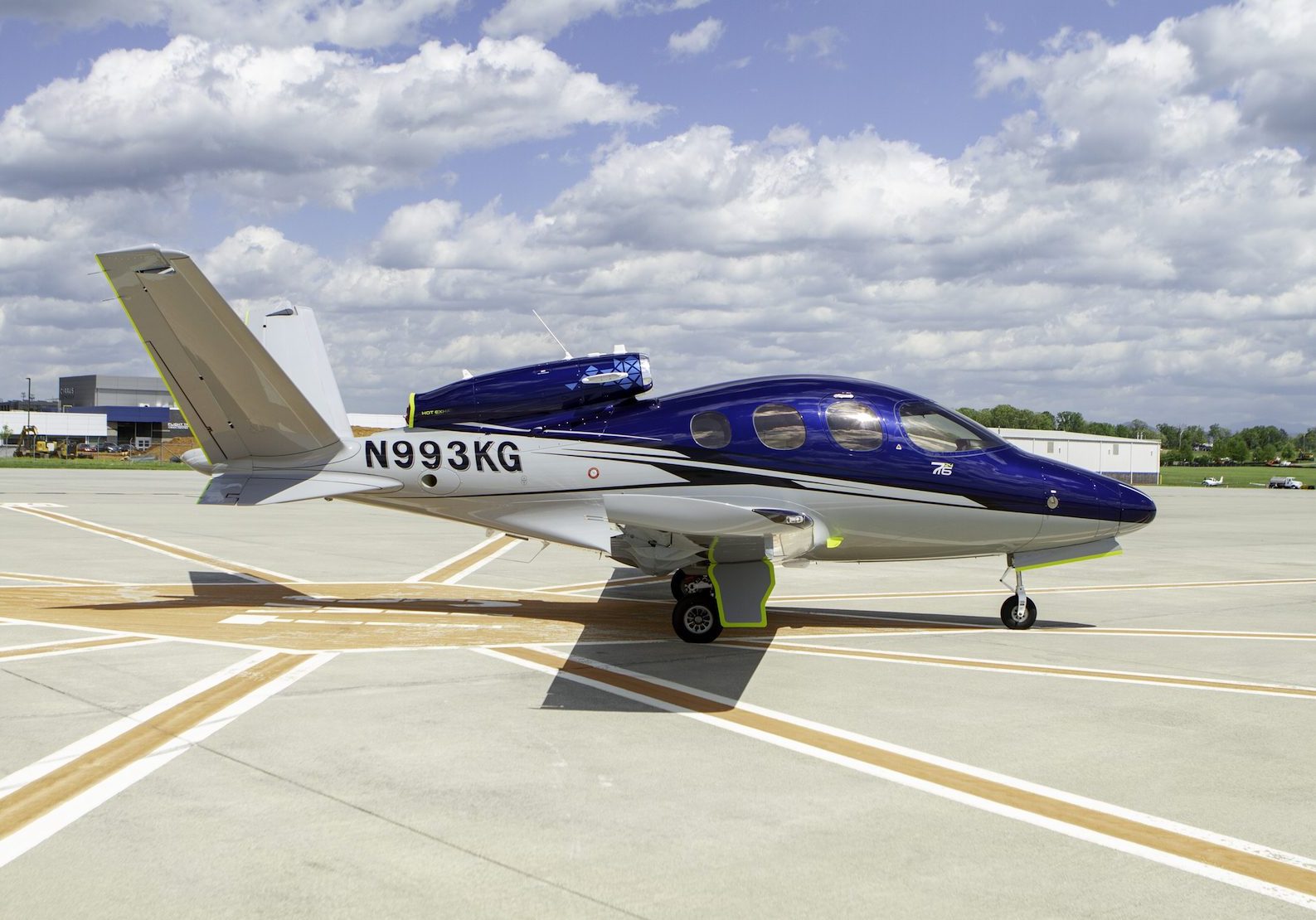
Welcome to this comprehensive guide on how to maintain and operate the revolutionary Cirrus Vision Jet. This single-engine personal jet has undeniably transformed personal aviation, offering luxury, excellent performance, safety, and cutting-edge technology. Whether you’re a seasoned pilot or an excited new owner, this guide is designed to help you grasp all aspects of your Cirrus Vision Jet, from mastering pre-flight procedures to understanding the avionics system and care of your jet’s interior. We’ll delve into specifics like the Williams International FJ33-5A engine, the Cirrus Airframe Parachute System (CAPS), and even winterization and cold-weather operations.
Introduction to the Cirrus Vision Jet
Embarking on an exploration of the Cirrus Vision Jet, a marvel of modern aviation that delivers an unrivalled flying experience. From its unique design to its powerful performance capabilities, this light jet is built to impress.
Overview of the Aircraft
The Cirrus Vision Jet, officially known as the SF50, is a single-engine, very light jet (VLJ) designed and manufactured by Cirrus Aircraft. It stands as the first civilian single-engine jet to reach the market, setting new standards for performance and functionality in the process. The Vision Jet was meticulously designed to deliver a seamless blend of comfort, safety, and performance that redefines personal air travel. Its unique design elements, like the V-tail design and carbon-fiber body, not only attributes to its aesthetic appeal but also its aerodynamic efficiency.
Designed with the quintessential SR Series aircraft DNA, the Vision Jet is lightweight yet sturdy, showcases impressive performance, and is equipped with state-of-the-art iconic features such as the Cirrus Airframe Parachute System (CAPS). Altogether, the aircraft is designed to take you where you need to go with convenience, safety, and style.
Key Features and Innovations
Forming the distinguishing ‘Amplified Regular Wave Pulse LightRay’ or V-tail design and carbon fiber body are just the tip of the iceberg when it comes to the Vision Jet’s groundbreaking features and innovations.
Key to the Vision Jet’s success is the revolutionary Cirrus Airframe Parachute System (CAPS), providing an unparalleled safety feature that can deploy a parachute to bring the whole aircraft safely down to the ground in an emergency situation.
The aircraft also boasts of advanced cockpit technology, with the Garmin Perspective Touch+ avionics system ensuring the pilot has all necessary flight data at their fingertips. Its interior boasts features such as flexible seating configurations that can accommodate up to five adults and two children, and its large windows offer stunning aerial views.
Perhaps one of the most innovative features is the Vision Jet’s single Williams International FJ33-5A turbofan engine. Mounted above the roof, this powerful engine provides exceptional performance in speed, range, and efficiency, making the Vision Jet a standout performer in the VLJ market.
Engineered to empower, the Cirrus Vision Jet brings together an expression of style, comfort, and ultimately practical personal transportation, setting itself apart from other aircrafts in its class.
Pre-Flight Procedures
Before any flight, a thorough pre-flight procedure is crucial. It not only ensures the safety of the aircraft and passengers but also the smooth operation of the Cirrus Vision Jet. These procedures entail detailed exterior inspections and interior checks and setups.
Exterior Inspection Checklist
The exterior inspection of the Cirrus Vision Jet is an important part of the pre-flight procedures. It involves checking many crucial components, such as wings, fuselage, engine, and landing gear, for any damage or anomalies.
The inspection should start with a general survey of the aircraft for any obvious issues such as fuel or oil leaks. Then, check the main landing gear for correct tire pressure and brake condition. Make sure the wings are free from any structural damage or fuel leaks. All control surfaces including ailerons, flaps, and elevator should move freely.
The engine, the heart of the Cirrus Vision Jet, needs a careful look. Inspect the intake for any foreign objects, verify the oil level, and check for any leaks around the area. Lastly, it’s paramount to inspect the nose and ensure the air-data sensors are free from obstruction.
Interior Checks and Setup
Interior checks and setup are the second part of pre-flight procedures. It begins with a quick scan of the cabin, checking the overall condition, ensuring seats are secure, and seatbelts are functional.
Next, move to the cockpit; verify all switches are in the OFF position. Ensure the flight controls are free and correct by visually checking the movement of the wings and tail surfaces. Check the avionics, making sure all navigation aids, radios, and GPS units are functional. Inspect all circuit breakers for any popped out and ensure that emergency equipment like fire extinguishers and first aid kits are in place and up-to-date.
The fuel quantity indicators should reflect the correct amount of fuel onboard compared to the fueling receipts. Afterward, conduct a flight instrument test, listen for any alarms or unusual sounds, and observe if any warning lights illuminate on the flight instrument panel. Setup the Flight Management System (FMS) with flight route information.
Completing these elementary pre-flight procedures will ensure you and your Cirrus Vision Jet are ready to take to the skies safely and efficiently. The key to efficient and successful flight operations lies in meticulously following these procedures every time you fly.
Operating the Cirrus Vision Jet
Operating the Cirrus Vision Jet requires a comprehensive understanding of various procedures, from start-up to shut down. This section details these procedures, providing expert insight to help both new and seasoned pilots achieve smooth, efficient flights with this single-engine jet.
Start-up Procedures
Every good flight begins with the correct start-up procedures. For the Cirrus Vision Jet, familiarise yourself with the cockpit’s Garmin Perspective Touch+ interface, which forms an integral part of the start-up process. Before you start up the engine, check the fuel quantity, power levels, and essential system statuses. Remember to keep the operator’s manual on hand at all times, as it includes important information such as engine start defaults.
Taxiing and Take-off Techniques
With proper start-up procedures completed, taxiing and take-off are the next steps. The Cirrus Vision Jet’s outstanding controllability makes taxiing on the ground a relatively straightforward process. For take-offs, the procedure is slightly different from conventional aircraft due to the Cirrus Vision Jet’s unique single-engine configuration. However, its intuitive jet controls allow for a seamless process, arguably bringing more simplicity and efficiency to the table than multi-engine jets do.
In-flight Operations and Systems Management
Cirrus Vision Jet’s flight deck equips pilots with advanced technology, significantly enhancing situational awareness during flight. The In-flight operations and systems management encompass navigation, managing the autopilot, adjusting power settings, and handling any possible system anomalies. The Cirrus Vision Jet also features the exclusive Cirrus Perspective Touch+ by Garmin that optimizes workflow and reduces workload providing you with more safety and confidence during the flight.
Landing and Shut-down Procedures
Landing a jet requires finesse, and with the Cirrus Vision Jet, precision control. Understanding the jet’s unique approach speeds and the influence of wind components is crucial. Post-landing, adhere to the systematic shut-down process, which includes ensuring the fuel system is correctly configured and all onboard systems and lighting are turned off.
Operating the Cirrus Vision Jet extends beyond mere piloting – it’s about understanding the mechanics of the aircraft, surrounding environment, and the technology you have at your fingertips. By mastering these elements, you can optimize your Cirrus Vision Jet operating experience.
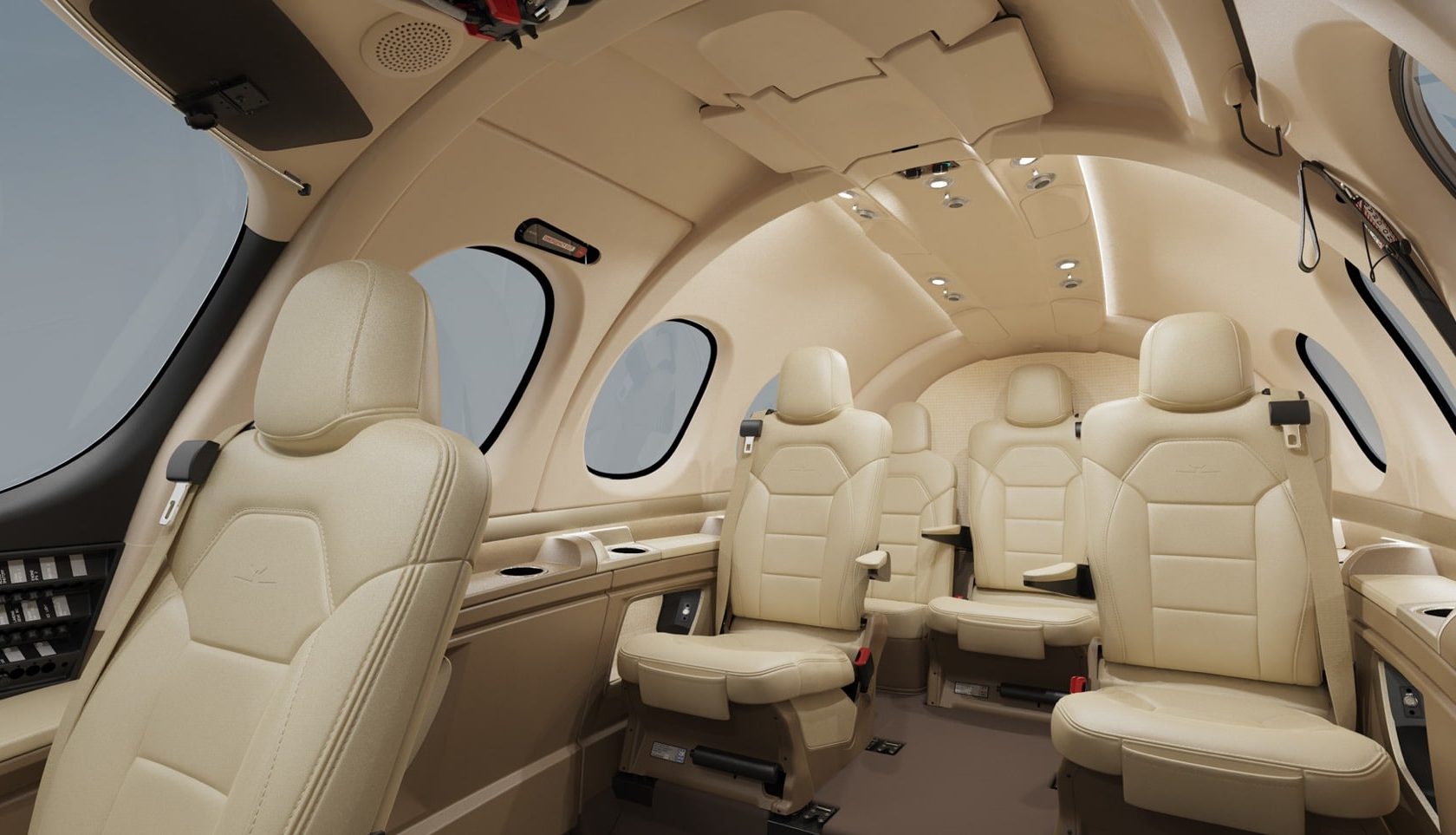
Maintenance Schedule and Requirements
Maintenance is imperative to the longevity and flawless operation of your Cirrus Vision Jet. Properly maintaining your aircraft not only ensures safety during flights but also extends its lifespan and preserves its resale value. This section will go through the details of everyday pre-flight maintenance, regular scheduled check-ups, and what to expect for the annual inspection.
Daily and Pre-flight Maintenance Tasks
Prior to take-off, there are a variety of checks and balances that need to be performed to make sure your jet is ready for flight. From a walk-around visual inspection to checking fluid levels and controls, daily maintenance is all about preventative care. Fuel and oil levels need to be checked, along with the correctness of tire pressures and security of caps, doors, and covers. It’s also essential to verify the functionality of hydraulic systems, onboard avionics, and controls. Following a consistent checklist will help identify any potential issues before they become serious problems in the sky.
Scheduled Maintenance Intervals
Scheduled maintenance is a more detailed inspection and tune-up of your Cirrus Vision Jet and generally follows the recommended intervals set out in the Cirrus maintenance manual. These intervals often come in the form of flight hours or calendar time, whichever comes first. This type of maintenance, performed by certified aircraft technicians, involves checking, servicing, or replacing parts like air filters, spark plugs, belts, and brake pads. It may also involve more thorough inspections of the jet’s systems and structure. Keep in mind that following these regular check-up routines is important for ensuring optimal performance and identifying small issues before they escalate.
Annual Inspection Requirements
Aside from daily and scheduled maintenance, your Cirrus Vision Jet must undergo an annual inspection. This is an intensive process carried out by a licensed aviation mechanic and covers the examination of the aircraft’s structural, mechanical, and avionics systems. Logbooks and other documentation will also be scrutinized to make sure all previous maintenance is up-to-date and met the required standards. Bear in mind that this annual inspection is not just a legal requirement, but it’s also an opportunity for you to ensure the safest flight conditions possible.
In conclusion, proper and regular maintenance of your Cirrus Vision Jet is crucial. By following daily and scheduled maintenance protocols, along with adhering to yearly inspection requirements, you can ensure that your Vision Jet remains functional, efficient, and most importantly, safe to operate.
Cirrus Airframe Parachute System (CAPS) Maintenance
In this section, we delve into a unique aspect of the Cirrus Vision Jet – the Cirrus Airframe Parachute System (CAPS). A significant safety feature, this system sets the Vision Jet apart from other light jets in its class. Let’s explore the importance of CAPS, understand its inspection and service intervals, as well as learn how to properly maintain this critical safety system.
Importance of CAPS
The Cirrus Airframe Parachute System (CAPS) is a vital safety measure installed in every Cirrus aircraft, including the Vision Jet. This parachute system is designed to ensure the safety of the passengers and crew on board in the unlikely event of an emergency.
In situations where the pilot can no longer control the aircraft, CAPS can be deployed, enabling the entire aircraft to descend slowly and safely to the ground. As a feature unique to Cirrus aircraft, the implementation of CAPS demonstrates Cirrus’s unwavering commitment to the safety of its aircraft operators and passengers. Having this system in place provides an extra layer of reassurance and peace of mind when flying.
Inspection and Service Intervals
To ensure that CAPS operates effectively when needed, it is essential to follow regular inspection schedules and service intervals. The parachute system should be inspected every six years, and the rocket motor used to deploy the parachute should be replaced every ten years.
These intervals are set by the manufacturer and are an important aspect of keeping your Vision Jet in prime condition. Always ensure that these inspections and services are carried out by Cirrus-approved technicians to maintain the aircraft’s warranty and guarantee the proper performance of the CAPS system.
Proper Care and Handling
While the CAPS system is a critical safety feature of the Cirrus Vision Jet, it also requires proper care and handling. Never attempt to inspect or tamper with the parachute or rocket motor yourself. This system and its components are under high tension and if mishandled, could result in serious injury.
Always ensure that the CAPS access panel is securely fastened and unobstructed. Additionally, take care during in-flight operations to avoid unnecessary CAPS deployments. The system should only be activated under circumstances when the safe flight of the aircraft can no longer be maintained.
In summary, the CAPS system, unique to Cirrus aircraft, adds an invaluable safety layer for Vision Jet operators. Proper care, regular inspection, and adherence to service intervals contribute to the effective operation of this life-saving feature.
Avionics and Cockpit Systems
Piloting the Cirrus Vision Jet is an experience that transcends conventional flight impressions, largely due to its advanced avionics and cockpit systems. Among the notable components is the state-of-the-art Garmin Perspective Touch+, a revolutionary flight deck purposefully designed for high performance.
Garmin Perspective Touch+ Overview
Garmin Perspective Touch+ is dubbed as the pinnacle of situational awareness and convenience in the private aviation industry. This advanced avionics system, specifically customized for the Vision Jet, offers comprehensive capabilities for intuitive flight control, efficient navigation, and effective communication. Streamlined and touchscreen-enabled, the system consolidates crucial flight information and functions onto large, high-resolution displays. Interactive maps, synthetic vision technology, and graphical flight planning are among the many features to appreciate with Garmin Perspective Touch+.
Troubleshooting Common Issues
Like any sophisticated technology, the Garmin Perspective Touch+ system may encounter occasional challenges. For example, you might experience difficulty in navigation due to inaccurate GPS data. A simple fix could be updating to the latest database, which contains the most accurate navigational information. Should the system freeze or become unresponsive, oftentimes, a reboot can rectify the issue. It is crucial to familiarise yourself with these and other common issues to feel confident in managing your Vision Jet’s avionics system.
Software Updates and Management
To ensure optimum performance of the Garmin Perspective Touch+ system, regular software updates are essential. These updates not only resolve potential glitches and improve system performance, but also introduce new features and enhancements to existing functionalities. Information about software updates and management can be accessed through the Garmin website or your Cirrus service provider.
Remember to carry out these updates during routine maintenance periods to avoid disruption in your flight schedule. Proper management of your Vision Jet’s avionics software underlines your dedication to maintaining optimal flight safety and efficiency.
In conclusion, fully understanding and managing the Vision Jet’s avionics and cockpit systems, particularly the Garmin Perspective Touch+, is vital for a seamless and enjoyable flying experience. The system is a powerful tool that brings together the marvels of modern avionics technology right at your fingertips.
Engine Care and Performance
Maintaining the extraordinary performance of your Cirrus Vision Jet starts with proficient engine care. Engine maintenance ensures efficient operation, reduces potential faults, and also prolongs the lifespan of your jet. In the section that follows, we’ll unravel the specifics of the Vision Jet’s engine, fuel management tips for efficiency, and guidance for troubleshooting common engine issues.
Williams International FJ33-5A Engine Specifics
The undeniable powerhouse of the Cirrus Vision Jet, the Williams International FJ33-5A engine, provides exceptional performance in both speed and altitude. It churns out approximately 1842 pounds of thrust, propelling the jet to a top speed of over 345mph (approximately 556km/h). It is also renowned for its ability to efficiently climb to an astonishing service ceiling of 31,000 feet. This power, coupled with its proven reliability and comparatively low maintenance needs, makes it an ideal heart for the Vision Jet.
Understanding the specifics of this engine, including its functionality, service intervals, and maintenance requirements, is key for owners to keep their jet always in optimum shape.
Fuel Management and Efficiency Tips
Fuel management is a critical aspect of engine operation. It’s not just about sustaining the engine but also optimizing its efficiency. Some tips for smooth fuel management include:
- Regularly check fuel levels pre-flight.
- Monitor in-flight fuel consumption.
- Carefully manage fuel load to balance weight distribution.
- During pre-flight checks, ensure the quality of fuel and absence of contaminants.
To enhance fuel efficiency, maintain optimal speeds and altitudes during flight, manage weight adequately, and ensure your jet is kept in the best condition.
Troubleshooting Engine Issues
Identifying and resolving engine issues promptly can avert costly damage. For the Williams International FJ33-5A engine common concerns may include:
- Rough operation or instability in RPM: This may be due to issues with the fuel, ignition system, or damage within the engine itself.
- Overheating: Usually attributable to issues in the cooling system, clogged coolant channels, or strenuous engine operation.
- Power loss: A more serious issue which could be due to faults within the engine or suboptimal fuel quality or delivery.
When these issues occur, it is always considered best practice to consult a certified aircraft maintenance technician. Regular maintenance checks and servicing are also recommended to possibly prevent the emergence of such issues.
Regular engine care combined with optimized fuel management and the ability to troubleshoot potential issues can guarantee your Vision Jet’s performance remains high while extending its life.
Interior Care and Cabin Maintenance
When owning a Cirrus Vision Jet, attention to interior care and cabin maintenance plays a crucial role in preserving the aircraft’s value and appeal, ensuring a comfortable flight experience each time.
Cleaning Procedures for Various Surfaces
Regular cleaning helps keep the jet’s interior looking sharp. To keep various surfaces from the dashboard to the storage compartments clean, use a mild detergent and a microfiber cloth. Always refrain from using any abrasive cleaners, which can scratch and damage the delicate interior surfaces. For the touch screen displays, use a cleaner specifically designed for electronic displays to avoid causing any inadvertent damage.
On leather surfaces, a gentle leather cleaner followed by a conditioner can help retain their softness and prevent cracking. Use a vacuum cleaner to remove dust and debris from hard-to-reach corners and crevices. Cleaning the cockpit area and controls requires special attention – carefully clean switches and knobs without disturbing their settings or causing damage.
Remember, always follow the cleaning instructions specified in the Cirrus Vision Jet’s maintenance manual.
Upholstery Care and Preservation
The upholstery in your Cirrus Vision Jet adds to the plush, comfortable ambiance during your flights. Continuous maintenance and care for the fabric, leather, or synthetic materials used in the upholstery can significantly improve its lifespan.
To retain the pristine condition of your upholstery, avoid exposing it to long durations of direct sunlight, which can cause discoloration and damage. Regular vacuuming can keep the seats free of dirt and reduce the risk of the upholstery fabric getting torn or worn out. Use specific cleaners for different materials – fabric cleaner for fabric upholstery and leather conditioner for leather seats. Minimize food and drink spills and clean them up immediately when they happen to avoid stubborn stains.
Environmental Control System Maintenance
The Environmental Control System (ECS) in a Cirrus Vision Jet is designed for the comfort of passengers and crew. It includes air conditioning and heating systems that control the in-flight temperature and ventilation. Ensuring this system operates optimally involves checking the various components regularly, cleaning or replacing filters as necessary, and monitoring system performance.
Always adhere to the inspection and maintenance schedule in your Cirrus Vision Jet’s maintenance manual to ensure the ECS works correctly. Any falters or inconsistent performances should be immediately checked by a professional.
By efficiently maintaining the aircraft’s interior care and cabin, not only do you improve your flight experience, but you also effectively preserve the overall value of your Cirrus Vision Jet for eventual resale or trade-in.
Winterization and Cold Weather Operations
Operating an aircraft in cold climates involves unique challenges, especially when you’re flying a state-of-the-art single-engine jet like the Cirrus Vision Jet. Here’s a comprehensive guide to help you navigate through them.
Preparing the Vision Jet for Cold Climates
Preparing your Cirrus Vision Jet for cold weather operations requires careful forethought and precise execution. Start by undergoing a thorough pre-heating of the engine, avionics, and cabin area especially when temperatures dip below -20 degrees Celsius. Opt for insulated engine covers and portable pre-heaters which help to maintain optimal starting conditions and prevent damages caused by cold starts.
Additionally, inspect all aircraft fluids to ensure they are suitable for low temperatures. Hydraulic fluids, oil, and fuel are prone to thickening in cold weather, which can result in decreased performance or even system failure. Always verify that they are within the recommended temperature ranges.
Lastly, ensure all pitot-static system drain holes and vents are clear of ice before the flight and use wing covers to protect the condition of the wings and reduce the likelihood of frost or ice accumulation on these surfaces.
De-icing Procedures and Equipment
Operating in cold climates increases the risk of ice build-ups on your Cirrus Vision Jet. This can increase weight, reduce aerodynamic efficiency, and potentially lead to serious safety concerns.
To combat this, the Vision Jet comes equipped with an Effective Ice Protection System (EIPS). This system automatically activates when icing conditions are detected, providing real-time wing, tail, engine inlet, and windscreen de-icing. Despite its effectiveness, you are advised not to rely solely on such in-built systems. Be active in your de-icing process by utilizing approved anti-icing fluids before each flight.
Also, maintain a close watch on the outside air temperature (OAT) and the visible moisture the aircraft is flying through. When flying in temperatures below freezing with visible moisture, the auto-ice system should be armed, ready to tackle any ice build-up.
Cold Weather Operating Tips
Navigating a Cirrus Vision Jet in the cold requires an understanding of the unique challenges presented by frigid temperatures. Here are a few tips to help you operate your Cirrus Vision Jet in cold conditions with ease:
- Store essential equipment: Carrying a cold weather kit containing extra clothing, blankets, food, and water is highly recommended in case you become stranded in freezing conditions.
- Avoid wet runways: Slush and ice on runways can reduce braking capabilities and control. It’s wise to avoid runways that aren’t properly cleared of snow, ice, or slush.
- Don’t rush the warm-up: Give your engine time to reach an optimal temperature before takeoff to avoid unnecessary wear and tear.
- Use a cover: A proper aircraft cover can help to keep snow and ice off the aircraft which reduces the need for de-icing.
- Check weather conditions thoroughly: During winter, weather conditions can quickly change from clear skies to snowstorms. Always check the forecast before your flight for any potential changes.
Remember, safety is paramount when dealing with challenging weather conditions. Don’t hesitate to delay your flight until conditions improve if necessary. The unique tactics required for winterized operations may seem daunting at first, but with careful planning and preparation, you’ll be mastering winter operations in your Cirrus Vision Jet in no time.
Hot Weather and High Altitude Operations
Just as important as operating in cold climates, understanding the nuances of flying your Cirrus Vision Jet in hot weather and high altitudes is critical. These operating conditions present unique challenges and factors that can affect your aircraft’s performance. It is therefore crucial that these areas are understood in depth.
Performance Considerations in Hot Climates
High ambient temperatures can have a profound effect on the performance of your Cirrus Vision Jet. Under hot conditions, the air density decreases. This decrease in air density can reduce engine performance, impair the efficiency of the aircraft’s lift, and necessitate longer runways for takeoff and landing because the aircraft may not climb as rapidly. Some methods to mitigate these effects include operating early in the morning or late in the evening, when the weather is cooler, or choosing runways at lower altitudes for takeoff and landing.
High Altitude Airport Procedures
Operation in high altitude conditions also changes the dynamics of flight. Just as with hot weather, high altitude can result in reduced performance. Before attempting to land or take off from a high-altitude airport, pilots should be familiar with the unique procedures involved. One must be aware of the impact of altitude on the aircraft’s weight and balance, runway length requirements, and approach speeds. Special attention should also be placed on the weather forecasts and the possibility of mountain wave activity, which can lead to turbulence.
Cooling System Maintenance
When operating in hot climates, ensuring your Cirrus Vision Jet’s cooling system is functioning optimally is crucial. This system ensures that the engine and avionics function within their temperature limits. Regular inspections of the cooling system components such as the engine coolant, cooling fans, and ventilation ports should be part of your maintenance routine. This can prevent overheat-related failures, optimize performance, and prolong the life of the aircraft’s systems.
By understanding and managing the implications of operating in hot weather and high altitudes, you can optimize your Cirrus Vision Jet’s performance and safeguard its longevity. Always remember to refer to the aircraft’s specific operating handbook for detailed performance data and procedures. And, as always, when in doubt, consult with experienced pilots or your aircraft maintenance provider.
Safety Features and Emergency Procedures
When it comes to operating any aircraft, safety should always be the top priority. In this section, we delve into crucial safety features and emergency procedures for the Cirrus Vision Jet.
Safe Return Emergency Autoland System
The Cirrus Vision Jet integrates a state-of-the-art Safe Return Emergency Autoland System. This innovative technology empowers passengers to land the aircraft safely in the pilot’s absence. Activating this system is as easy as pressing an icon on the touchscreen, and the rest is fully automated. The system determines the nearest suitable airport, calculates the best route, communicates with air traffic control, and executes a precision landing – all without human intervention.
Emergency Checklist Familiarization
Understanding and committing the emergency procedures to memory can make all the difference in the event of a life-threatening situation. The emergency checklist for Cirrus Vision Jet provides a structured plan for responding to various emergency scenarios. Familiarising yourself with this checklist should be a critical part of your pre-flight preparation. Make sure to rehearse these steps until you can recall them proficiently under pressure.
Pilot Incapacitation Protocols
In light of the worst-case scenario – pilot incapacitation, having a defined set of protocols is vital. The pilot incapacitation protocols in the Cirrus Vision Jet guide the passengers on the course of actions to undertake. These guidelines cover tasks ranging from contacting Air Traffic Control, initiating the Safe Return Emergency Autoland System, to providing immediate first aid to the pilot. It’s essential for passengers to be briefed on these protocols before each flight for a safe journey.
With these safety measures in place, flying aboard the Cirrus Vision Jet is both an enjoyable and safe experience. Embrace and respect the powerful technology underpinning this phenomenal aircraft, and it will indeed cater to the most unforgettable and secure flying adventures.
Cost Management and Efficiency
Owning and operating a jet such as the Cirrus Vision definitely comes with its set of implications concerning costs. Thus, understanding how to manage and attain efficiency in expenditure becomes an invaluable tool for operators. In this section, we delve into three areas – fuel consumption optimization, maintenance cost reduction strategies, and insurance considerations.
Fuel Consumption Optimization
Fuel economy is not only a matter of cost but also environment-friendly operation. To optimize fuel consumption, the Cirrus Vision Jet incorporates various strategies. Maintaining optimal flight profiles, avoiding excessive idling times, and accurately calculating fuel loads can contribute to significant savings in fuel costs over time. It’s also worth considering fuel prices at various airports – refueling at the airport with the most economic fuel prices can make a big difference in operational costs.
Maintenance Cost Reduction Strategies
Maintenance is an inevitable aspect of aircraft ownership, but understanding how to control these costs can significantly impact your bottom line. Sticking to a regular, preventative maintenance schedule can help alleviate the need for unexpected repairs, extending the longevity of the aircraft’s components and systems. In addition, take advantage of any warranty coverage from the manufacturer. Cirrus provides a limited warranty that covers parts and labor for certain components. Leveraging this can drastically reduce out-of-pocket maintenance costs.
Insurance Considerations
Aviation insurance is another major component of aircraft ownership costs. It is advisable to evaluate various insurance options available in the market and choose the one that offers the best coverage at the most competitive rates. Factors that can affect your premium include the pilot’s experience and training, the aircraft’s use (personal or commercial), its storage location, and safety features. The Cirrus Vision Jet comes equipped with safety systems like the Cirrus Airframe Parachute System (CAPS) and the Garmin Emergency Autoland System, which may lower your insurance premiums. Regular pilot training, proper aircraft maintenance, and having a good claims history can also lead to reductions in the amounts you pay for insurance.
In conclusion, managing costs for a Cirrus Vision Jet involves keen attention to several factors. However, with proper planning and prudence, you can enjoy the pleasure of flying your own jet without breaking the bank.
Upgrades and Modifications
In the world of personal aviation, customization is key. The Cirrus Vision Jet is no exception, offering buyers a range of options for upgrading and personalizing the aircraft to better suit their needs and preferences.
Available Performance Enhancements
The Cirrus Vision Jet is already a high-performing single-pilot jet. Still, there are several add-ons and modifications available to enhance its performance further. These range from engine power enhancements to aerodynamic tweaks, including winglet modifications. Jet owners can also opt for extended-range fuel tanks, additional landing gear, and even advanced weather forecasting equipment. The possibilities are extensive, allowing you to tailor the performance of your Vision Jet to your personal needs and flight style.
Avionics Upgrades and Options
The Garmin Perspective Touch+ avionics suite, standard on the Cirrus Vision Jet, is renowned for its intuitive design and extensive capabilities. However, several upgrades and options can further enhance the flight experience. These include state-of-the-art autopilot systems, enhanced vision systems for increased visibility in low-light conditions, satellite communications systems for uninterrupted global connectivity, and upgraded weather radar capabilities. These avionics upgrades can drastically improve the safety, efficiency, and convenience of your flights, providing a more relaxed and enjoyable pilot experience.
Interior Customization Possibilities
The Cirrus Vision Jet already tantalizes with its luxury interior, beautifully designed in clean lines and high-quality materials. However, the customization opportunities offer the chance to tailor the cabin to individual preferences. Choose from an exquisite range of upholstery options, custom seat embroidery, personalized cabin layout configurations, and premium galley fit-outs that include extras such as built-in coffee makers. And it’s not just the aesthetics; you can also equip the cabin with high-tech infotainment systems for a complete in-flight entertainment experience.
By taking advantage of these upgrades and customization options, Cirrus Vision Jet owners can ensure their aircraft truly reflects their taste, lifestyle, and flight requirements. After all, owning a jet is all about the luxury of convenience and personal choice – a principle that Cirrus has embraced in its approach to the Vision Jet.
Training and Proficiency
Operating a Cirrus Vision Jet effectively and safely relies heavily upon appropriate training and maintaining proficiency. Whether you’re a novice or an experienced pilot, continuous learning and skills enhancement are paramount when it comes to piloting this advanced and innovative aircraft.
Initial and Recurrent Training Requirements
Initial training for piloting the Cirrus Vision Jet is a comprehensive program designed to equip new owners and operators with the knowledge and skills necessary to fly this technologically-advanced aircraft. It covers the ins and outs of aircraft operations, including systems knowledge, pre-flight procedures, emergency procedures, and more.
For recurrent training, all Vision Jet operators should undergo regular recurrency training for constant skills enhancement and updating of crucial aviation knowledge. Recurrent training not only ensures safety but also provides a chance to learn about any updates or modifications to the aircraft or its systems. Various training centers offer tailored programs catering to both low-hour and experienced pilots.
Simulator Training Options
Simulator training is a crucial part of any pilot’s journey to mastery, regardless of the aircraft type they fly. For new Vision Jet pilots, simulator training is particularly beneficial. It offers a safe and controlled environment to practice handling challenging flight scenarios and emergencies without the real-world risks.
Leading aviation training institutions offer high-quality Cirrus Vision Jet simulator training. With sophisticated simulators that closely mimic the Vision Jet’s cockpit and flight dynamics, these programs allow pilots to gain a hands-on understanding of the aircraft’s operations in various flight conditions.
Maintaining Pilot Proficiency
Beyond the structured initial and recurrent training, maintaining pilot proficiency involves regular self-study, utilizing various aviation resources, and applying good airmanship, which includes regular flying practice.
Making use of online pilot forums, attending aviation seminars, and participating in type-specific pilot groups are all excellent ways to stay updated on the latest operational practices and share experiences with other Cirrus Vision Jet operators. Regularly flying the Vision Jet and challenging yourself with new routes, different weather conditions, and varied flight scenarios will help keep your skills sharp and ensure you’re prepared for every flight.
In conclusion, training and maintaining proficiency are ongoing responsibilities for every Vision Jet pilot. Ensuring regular, quality training and practice will not only lead to safer flights but also enhance your overall enjoyment of this revolutionary personal jet.
Resale Value and Ownership Transfer
When you’ve decided it’s time to part ways with your Cirrus Vision Jet, it’s vital to understand the factors that can impact its resale value and the process of transferring ownership.
Factors Affecting Resale Value
Just like any other asset, several factors can affect the resale value of your Cirrus Vision Jet. Keeping an aircraft in pristine condition, both aesthetically and mechanically, is of utmost importance. Regular maintenance, minimal wear and tear, and a detailed logbook can significantly retain the jet’s value over time. The total flight hours can also be a significant determinant – generally, the lower the flight hours, the better.
Moreover, the market’s current state can impact pricing immensely, often boiling down to ‘supply and demand’ dynamics. If there are many Cirrus Vision Jets on the market, prices may decrease, and vice-versa.
Lastly, any upgrades or modifications you’ve done – such as avionics upgrades or interior customizations – can add to the resale value, so long as they are desirable enhancements in the current market.
Preparing Your Vision Jet for Sale
Preparing your Cirrus Vision Jet for sale goes beyond mere physical appearances. Sure, you should undertake a thorough cleaning process, inside and out, to present the aircraft in its best possible state. But equally critical is ensuring that all maintenance records are properly documented and updated. Addressing any existing issues with the aircraft’s systems or structure before the sale is also important.
Don’t forget, potential buyers will likely undertake a pre-buy inspection. Thus, it’s better that you uncover and resolve any issues beforehand to prevent them from taking a hit on the price or scaring off potential buyers.
Ownership Transfer Process and Documentation
Ownership transfer can be a convoluted and tedious process, especially if you’re unfamiliar with the requirements and necessary steps. In the UK, the Civil Aviation Authority (CAA) is responsible for aircraft registration and ownership transfers, and they have strict procedures in place for such activities.
For the transition to go smoothly, ensure you have all the required documents, including the bill of sale, proof of cancellation from the previous registry (if the aircraft is imported), and evidence of insurance. An Aircraft Registration Application will also need to be filled out.
Remember, it’s crucial to ensure that the transfer takes place legally and thoroughly. This involves making sure that the aircraft is accurately and fully registered in the new owner’s name, and that an updated Certificate of Registration is requested from the CAA. If you’re unsure about any aspect of the process, it may be beneficial to consult a legal representative or aviation consultant to guide you through the process.
Note: While we aim to provide accurate and up-to-date information, this text should not be used as legal advice or as a comprehensive overview of the procedures involved in the sales and transfer process. Always refer to relevant authorities or speak with a professional advisor.
